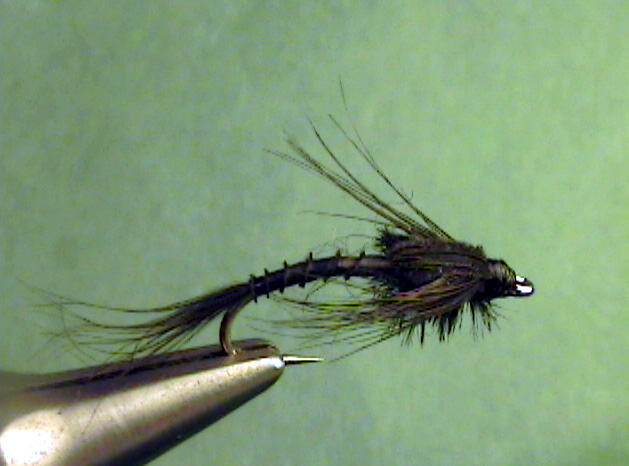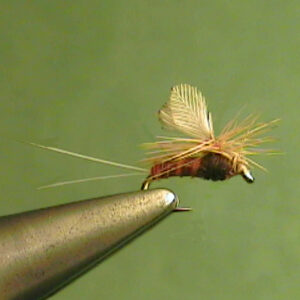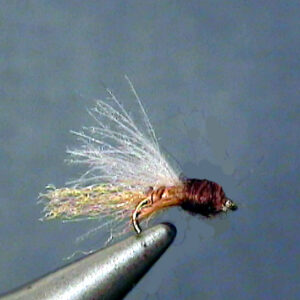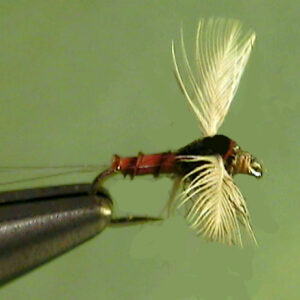Hook Size: 18
species. They are both Eastern and Mid-western trout stream species. These are
crawler nymphs that exist the slow to moderate sections of the moderate to fast
water streams they reside in. Almost always you will find weed beds or grass in
the streams they exist in. They may also be called “Blue Winged Quills”. Fast
water or pocket water streams that are very fertile also have these mayflies,
again, provided they have grass or weeds.
Presentation:
If you are fishing the streams that have these mayflies in substantial numbers
during times there is no hatch taking place, then I suggest you fish the nymph
along the bottom of the stream near weed or grass beds. You want to get it as
close to the weed beds or grass without hanging up as possible. These nymphs
live in the grass beds.
You may try fishing the “Perfect Fly” Little Dark Hendrickson Nymphs above the
grass beds (if they are underwater) by suspending the fly above the grass with a
strike indicator. The exact way you do this depends greatly on the depth of the
water and the grass or weeds.
Just prior to a hatch is the best time to fish the nymph imitations. As I said above,
the nymphs will move from the faster water to calm water to hatch. You should try
to fish the current seams along the edges of the calmer water in the mornings
prior to the hatch. We have had good success with the nymphs during the early
phases of the hatches. The nymphs seem to congregate in the calmer areas of
water within the moderate to fast water.
If the stream has grass or week beds that are on a flat or area of water with
smooth flows, you may want to fish the nymph suspended by a strike indicator
along the grass lines before the hatch takes place.




